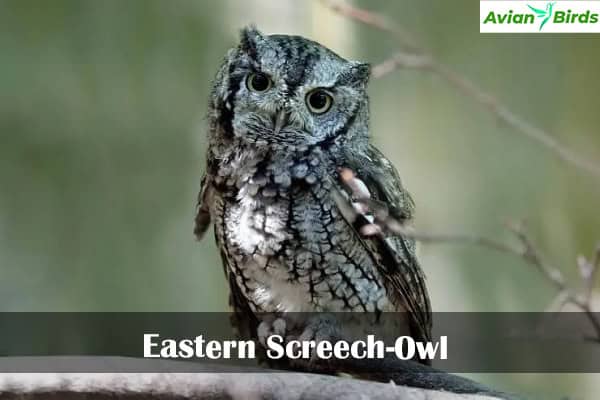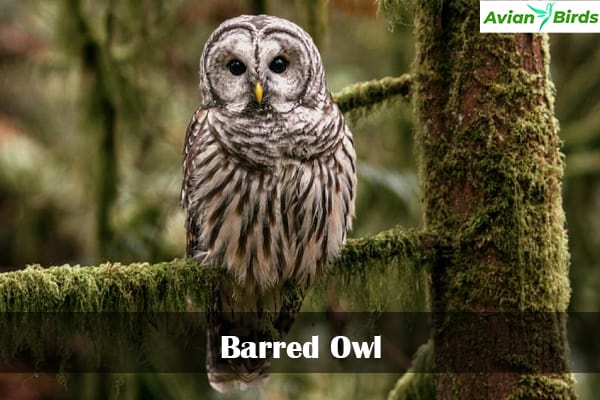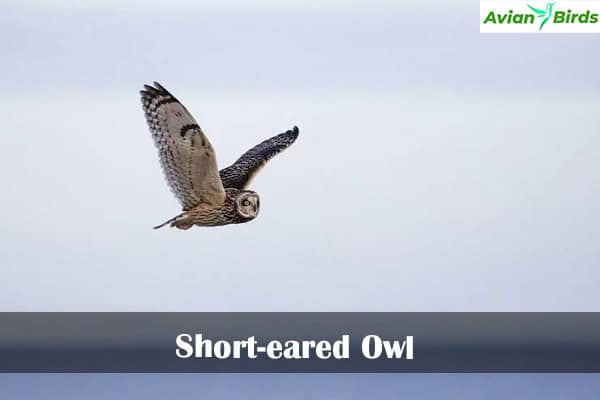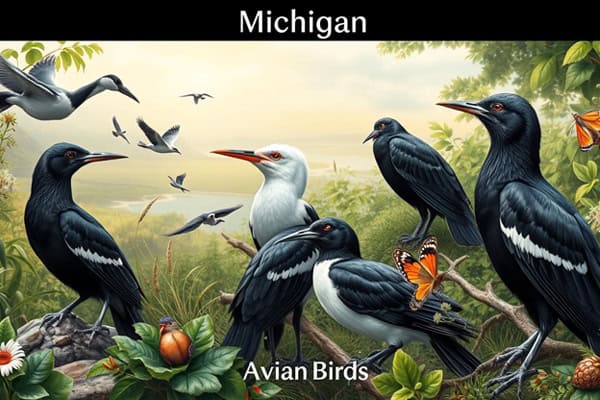6 Types of Owls in Arkansas (With Pictures)
Do you know that over 70 owls exist, but only six live in Arkansas? This shows how important owls are in our ecosystem. We’ll learn about their science, behavior, and where they live.
Owls are key to keeping Arkansas’s wildlife balanced. They are important for our nature appreciation. If you love birdwatching or just like learning about wildlife, you’ll find this interesting. Let’s explore the world of owls in Arkansas together, with pictures and fun facts.
Introduction to Owls in Arkansas
Owls are fascinating birds that live in Arkansas. They are found in beautiful landscapes. These birds adapt well to their homes.
Owls are active at night. The Great Horned Owl makes a haunting sound in the forests. The Barn Owl moves quietly over fields. They help keep the ecosystem balanced by eating rodents.
Arkansas has many owl species. These birds are important to the ecosystem. Let’s learn about the owls in our state together.
| Owl Species | Habitat | Diet | Notable Features |
|---|---|---|---|
| Great Horned Owl | Forests, woodlands | Small mammals, birds | Large tufts, powerful talons |
| Barn Owl | Open fields, farmlands | Rodents, insects | Heart-shaped face, silent flight |
| Eastern Screech Owl | Woodlands, suburban areas | Insects, small mammals | Color morphs, unique calls |
| Barred Owl | Swamps, dense forests | Small mammals, birds | Striking appearance, distinct hoots |
| Short-eared Owl | Grasslands, marshes | Rodents, insects | Short ears, daytime activity |
1. Eastern Screech-Owl
- Scientific Name: Megascops asio
- Size: 19–24 cm (7.5–9.5 in)
- Weight: 120–250 g (4.2–8.8 oz)
- Lifespan: 3–10 years
- Diet: Insects, small mammals, and birds
The Eastern Screech-Owl, known as Megascops asio, is a favorite among bird lovers. It has unique traits and behaviors. This small owl plays a big role in many places across the United States.

Physical Appearance and Behavior
The Eastern screech owl has tufted ear feathers and bright yellow eyes. Its mottled feathers help it blend in with trees and leaves. At night, it hunts for insects and small mammals. It’s very good at finding its prey in the dark.
Nesting and Habitat Preferences
These owls like to nest in tree holes or nest boxes. Both parents take care of their babies. They live in different places, from forests to cities. We need to protect their homes from city growth so they can keep living there.
| Characteristic | Details |
|---|---|
| Scientific Name | Megascops asio |
| Size | 6.5 to 10 inches |
| Life Span | 8 to 10 years |
| Call Type | Melodious trill |
| Nesting Habit | Tree cavities or nest boxes |
| Main Diet | Insects and small mammals |
| Habitat | Wooded areas, suburban neighborhoods |
2. Great Horned Owl
- Scientific Name: Bubo virginianus
- Size: 45–63 cm (18–25 in)
- Weight: 1.4–2.5 kg (3.1–5.5 lb)
- Lifespan: 15–25 years
- Diet: Mammals, birds, and reptiles
The Great Horned Owl, known as Bubo virginianus, is a sight to behold. It’s a big owl in the United States, known for its strength and beauty. It’s a key part of Arkansas’ wildlife, with amazing skills and a big role in nature.

Scientific Name and Characteristics
Bubo virginianus stands out with its unique look. It can grow 17 to 25 inches tall and has a wingspan of up to 5 feet. Its ears look like horns, which is how it got its name. Its feathers are gray and brown with bright patterns, helping it hide in the wild.
Diet and Hunting Skills
The Great Horned Owl eats a wide variety of food. It mainly eats small to medium animals and birds. It’s a top hunter, using silent flight and great hearing to find its food. It waits quietly, then quickly grabs its prey when the time is right.
| Feature | Details |
|---|---|
| Scientific Name | Bubo virginianus |
| Height | 17 to 25 inches |
| Wingspan | Up to 5 feet |
| Typical Diet | Small to medium-sized mammals and birds |
| Hunting Techniques | Silent flight, acute hearing, and ambush |
3. American Barn Owl
- Scientific Name: Tyto alba
- Size: 33–39 cm (13–15 in)
- Weight: 400–700 g (0.88–1.54 lb)
- Lifespan: 4–5 years (up to 20 years in captivity)
- Diet: Small mammals, especially rodents
The American Barn Owl, known as Tyto furcata, is fascinating. It has a heart-shaped face and brown and white feathers. This helps it hide in its surroundings. It lives in many places and helps keep nature in balance.
Identification and Features
This owl can have a wingspan of up to 43 inches. Its face is shaped like a heart and helps it hear better. It makes a unique sound instead of hooting. This sound helps us know it’s around.
Nesting Habits
The American Barn Owl is great at making nests. They use barns, silos, and even church steeples. They pick places close to where they hunt. A nest usually has 3 to 7 eggs, and both parents take care of the babies.
Significance in Pest Control
This owl is important for controlling pests. It eats rodents, which helps farmers. By doing this, it reduces the need for harmful chemicals. We value its role in keeping the environment healthy.
Owls in other Regions:
4. Barred Owl
- Scientific Name: Strix varia
- Size: 40–63 cm (16–25 in)
- Weight: 500–1,100 g (1.1–2.4 lb)
- Lifespan: 4–10 years
- Diet: Small mammals, birds, and amphibians
The Barred Owls of Arkansas, known as Strix varia, is known for its unique look and how it fits into its environment. It has brown feathers with vertical bars, making it easy to spot. At night, its call sounds like “who cooks for you” in the woods.

Unique Features of the Barred Owl
It’s easy to spot a Barred Owl because of its distinct look. It has a round head and dark eyes on a brown background. Its wings are wide and round, and its tail is short, helping it fly quietly through trees.
Dietary Preferences
Knowing what the Barred Owl eats shows its important role in nature. It mainly eats small mammals like mice and voles. But it also eats birds, amphibians, and insects, showing it can adapt to different food sources.
Common Locations for Spotting
If you want to see a Barred Owl, you can find them in many places. They live in old forests, swamps, and even near cities. Look for them in state parks, nature reserves, or wooded areas near homes. Each place offers a chance to see these amazing birds in the wild.
5. Short-eared Owl
- Scientific Name: Asio flammeus
- Size: 32–40 cm (12.6–15.7 in)
- Weight: 250–500 g (0.55–1.1 lb)
- Lifespan: 3–5 years
- Diet: Small mammals, especially voles
The Short-eared Owl, known as Asio flammeus, is unique because it hunts during the day. It’s different from most owls that hunt at night. This gives us a chance to see its interesting behaviors.

These owls live in open places like grasslands and fields. They glide through the air with ease. This lets them search a lot of ground for food.
They have great eyesight. This helps them spot small mammals and birds, which they eat a lot of.
Watching the Short-eared Owl during the day is special. It’s a treat for anyone who loves birds. Learning about owls like Asio flammeus helps us appreciate the birds in Arkansas more.
Habitat and Behavior of Owls in Arkansas
In Arkansas, owls live in many different places. They call forests, wetlands, and fields home. Each place is important for the owls to survive and thrive.
Owls are very adaptable. They can live in many conditions. This lets them survive in Arkansas’s changing weather.
Diversity of Habitats in Arkansas
Arkansas is home to many different ecosystems. These support various owl species. Here’s a look at the habitats and owls that live there:
| Habitat Type | Common Owl Species | Characteristics |
|---|---|---|
| Dense Forests | Barred Owl | Prefers mature trees for nesting, abundant prey availability |
| Wetlands | Great Horned Owl | Utilizes marshlands, hunting aquatic and terrestrial prey |
| Open Fields | Short-eared Owl | Relies on grasslands for hunting small mammals |
How Weather Affects Owl Species
Weather plays a big role in how owls live. Storms and changes in temperature can change their hunting and nesting. Owls must adapt to survive.
Storms can make it hard for owls to hunt. This makes them change how they find food and where they live. Knowing this helps us see how strong owls are in nature.
Conservation Efforts for Owls in Arkansas
Ensuring owls survive in Arkansas is crucial. We must protect their homes. This means keeping their nesting sites and natural habitats safe. Urban growth threatens them, so we need to watch their numbers and give them safe places.
Importance of Preserving Owl Habitats
Protecting habitats helps owls and all wildlife. Healthy ecosystems keep nature in balance. By preserving habitats, we make a safe place for owls and other species. They get to hunt and nest where they should.
Community Awareness and Involvement
Getting the community involved is key. Awareness programs and education teach people about owls. When people learn about owls, they help protect them. Simple actions like making safe spaces and reporting owl sightings help a lot.
Best Locations to Spot Owls in Arkansas
Arkansas is a great place for owl-watching. It has many spots perfect for nature lovers. State parks and wildlife refuges are great places to see owls. They offer a chance to see these amazing birds in their natural setting.
Top State Parks and Wildlife Refuges
Here are some top places to see owls in Arkansas:
- Ozark National Forest: This area has dense forests and many habitats. It’s a great place to find the Barred Owl.
- Cache River National Wildlife Refuge: The refuge has wetlands that attract owls like the Great Horned Owl.
- Devil’s Den State Park: Its tough terrain and rich wildlife make it perfect for seeing owls at dusk.
- Petit Jean State Park: This park is known for its beauty and is often visited by Eastern Screech-Owls.
Tips for Owl Watching
Here are some tips to make owl-watching better:
- Go out early in the morning or late in the evening when owls are most active.
- Keep quiet to not scare these birds away.
- Use binoculars to see owls up close but keep a safe distance.
Read More 🐦Articles:
| Hummingbirds in Florida |
| Doves in Michigan |
| Hummingbirds in Maryland |
| Birds with Long Beaks |
| Birds Chirping at 3AM Spiritual Meaning |
Conclusion
We celebrate the many owl species in Arkansas and their important roles in our ecosystems. From the Eastern Screech Owl to the Great Horned Owl, we’ve learned a lot about them. Each owl adds to the rich wildlife in this area, showing us how nature is connected.
It’s clear that we need to work hard to protect owls in Arkansas. By learning about their homes and how they live, we can help keep them safe. Loving owls helps us care for Arkansas’s nature and encourages us to live sustainably.
Let’s work together to protect these amazing birds for the future. By spreading the word and joining conservation efforts, we can make a big difference. This way, the beauty of Arkansas’s owls will continue to amaze us for years to come.







